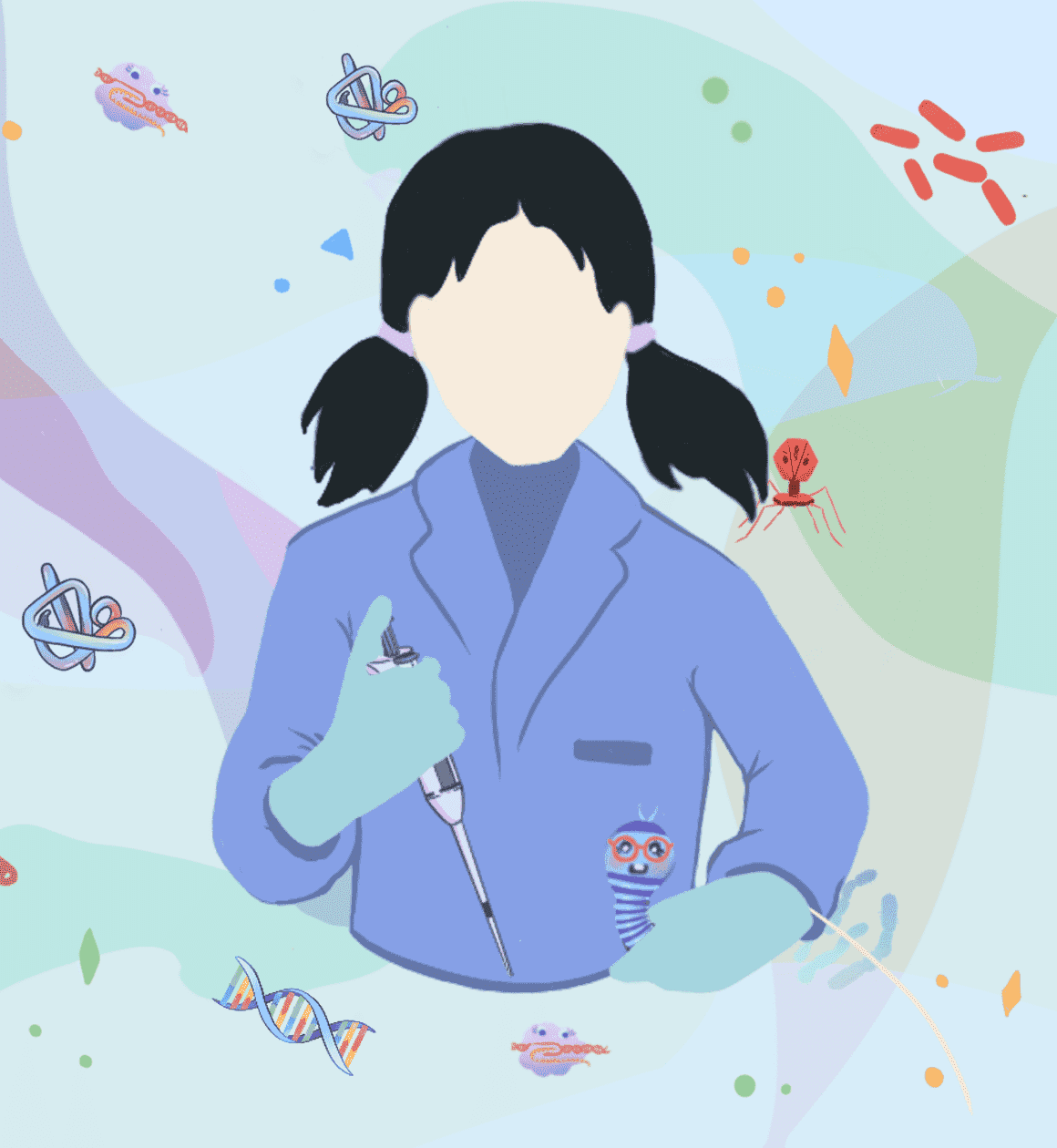What is CRISPR?
In this section of CRISPR Made Simple, learn about where CRISPR is found in nature and how it helps bacteria fight infections.
Key Takeaways
Germs are everywhere. Some are helpful and some are harmful. Many organisms have immune systems to fight dangerous germs. Some bacteria and archaea have an immune immune system to fight off viruses. This system is called CRISPR for short.
Vocabulary
Germs, bacteria, bacterium, virus, bacteriophage, phage, the immune system, CRISPR
What is CRISPR?
Today, CRISPR is known as a tool that can edit DNA in almost any organism. It can take out, add, or change DNA letters, like you do typing words on a computer. But in nature, CRISPR evolved for a different reason: to fight dangerous germs.
What are germs?
Using the word “germs” is a casual way to talk about very small things! Germs usually means:
- One-cell organisms like bacteria, archaea, and some fungi
- Viruses
Germs are everywhere! Some germs are healthy for us. We all have healthy bacteria inside our bodies that help us digest food! Some germs are useful. Different germs turn flour into bread and make cabbage into kimchi! Scientists can even use some germs like little factories to make medicine.
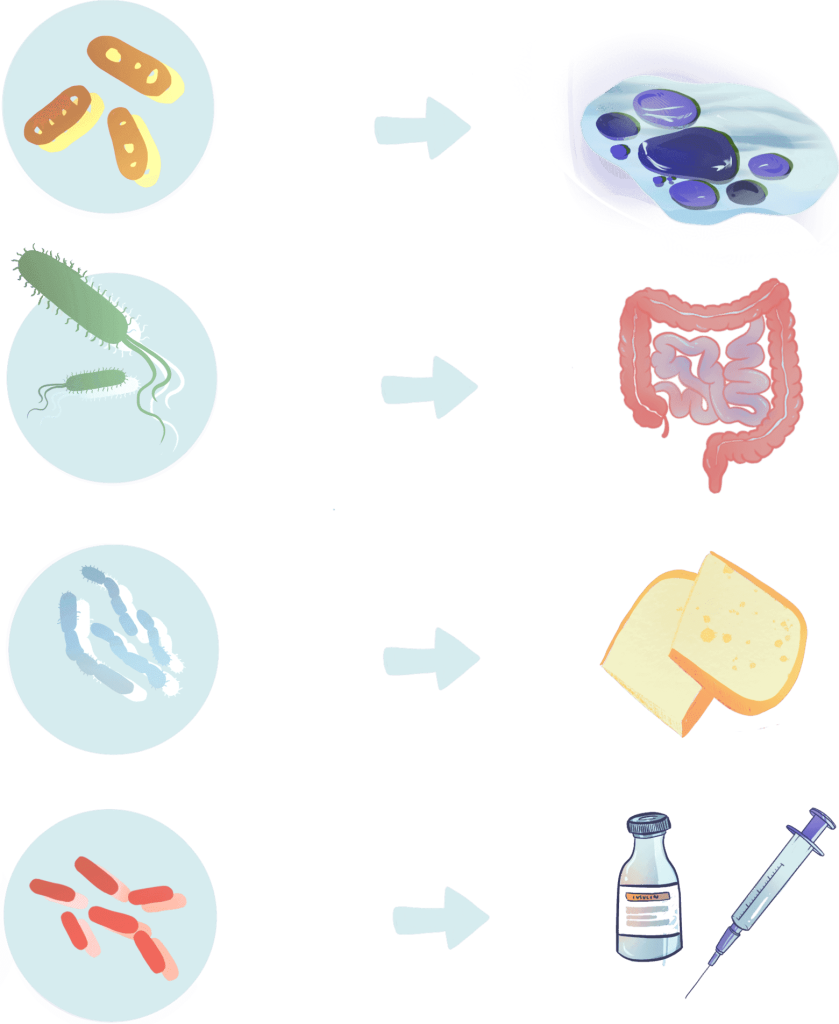
Other germs can make you sick. For example, a kind of bacteria called Streptococcus can cause strep throat. Influenza viruses can cause the flu. Even though we come across potentially dangerous germs all the time, most of the time we stay healthy. This is because our bodies have a special system called the immune system. The immune system has a big job! It has to:
- Figure out if a germ is safe or dangerous
- Stop dangerous germs
Where does CRISPR come from?
Over time, different kinds of organisms have evolved different kinds of immune systems. Just like some viruses can make us sick, other kinds of viruses can infect bacteria and make them sick. The viruses that infect bacteria are called bacteriophages — or “phages” for short — and they often look like little moon landers. A phage lands on the outside of a bacterium (a single bacterial cell), and injects its DNA straight in! Then it uses the bacterium as a factory that makes more phages. As more and more phages get made, they eventually BURST out of the cell, killing it! Then they infect new cells.

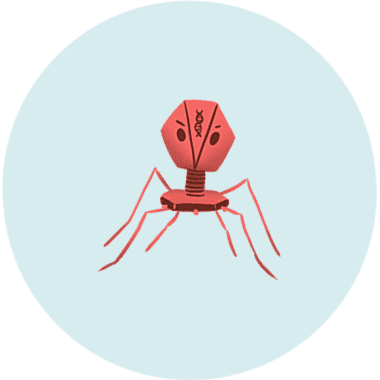
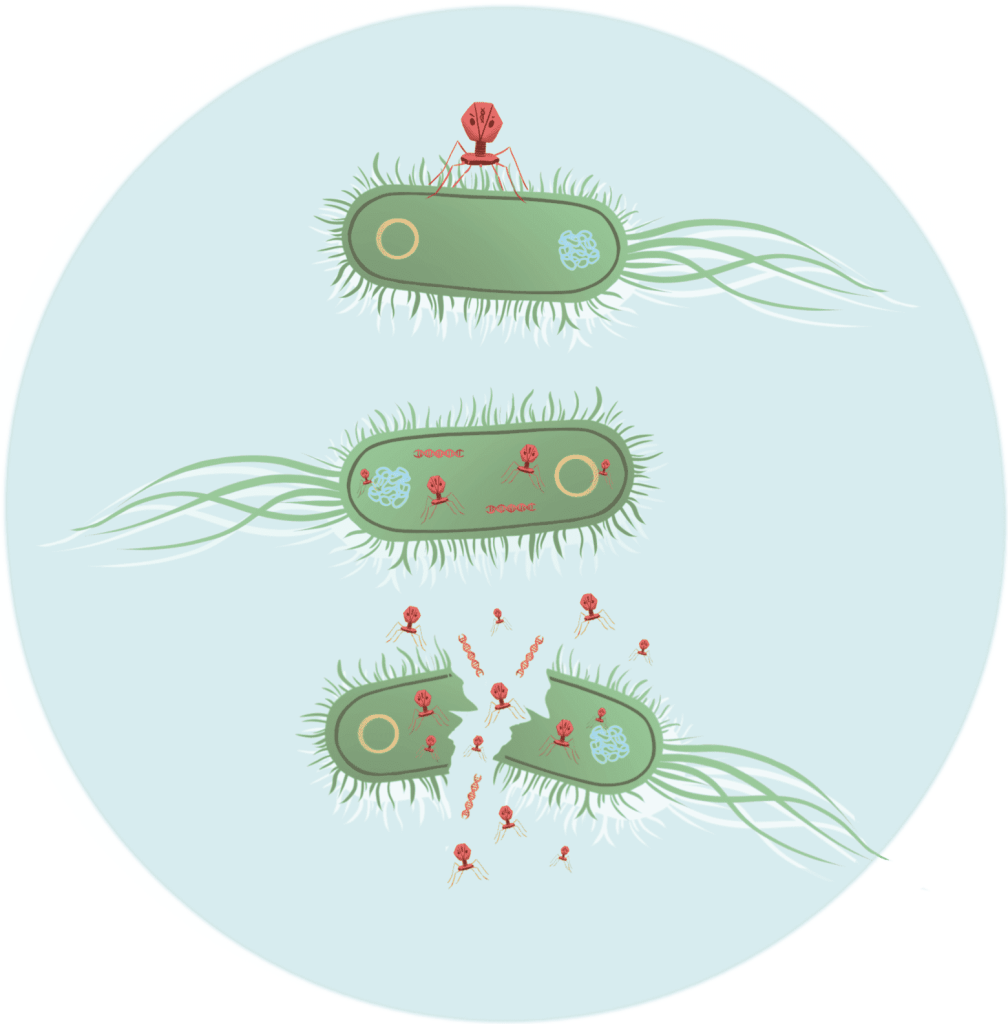
In the natural world, there are ten times as many phages as bacterial cells! In response to this huge threat, bacteria have come up with way to defend themselves. The defenses are the bacteria’s own version of an immune system.
CRISPR is one immune system that many bacteria use to fight viruses. CRISPR is special because it remembers previous phage attackers. How does it do this? The bacteria takes small pieces of DNA from invading phages. Then, it stashes them in its own genome, like a mugshot of what to look for. These DNA mugshots are called “CRISPR.” The bacterium compares DNA in the cell against these mugshots. When there is a match, CRISPR proteins team up with the CRISPR DNA sequences. CRISPR proteins act like tiny scissors that cut up the virus’s DNA and destroy it.
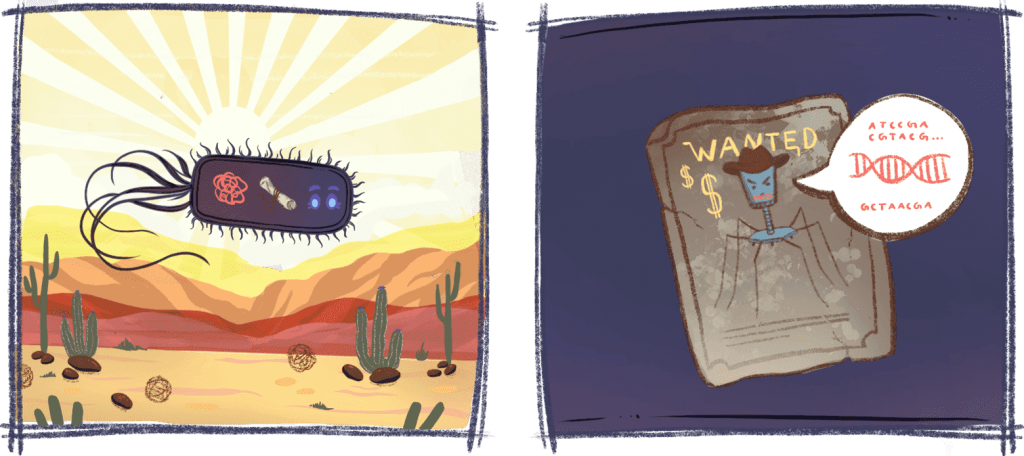
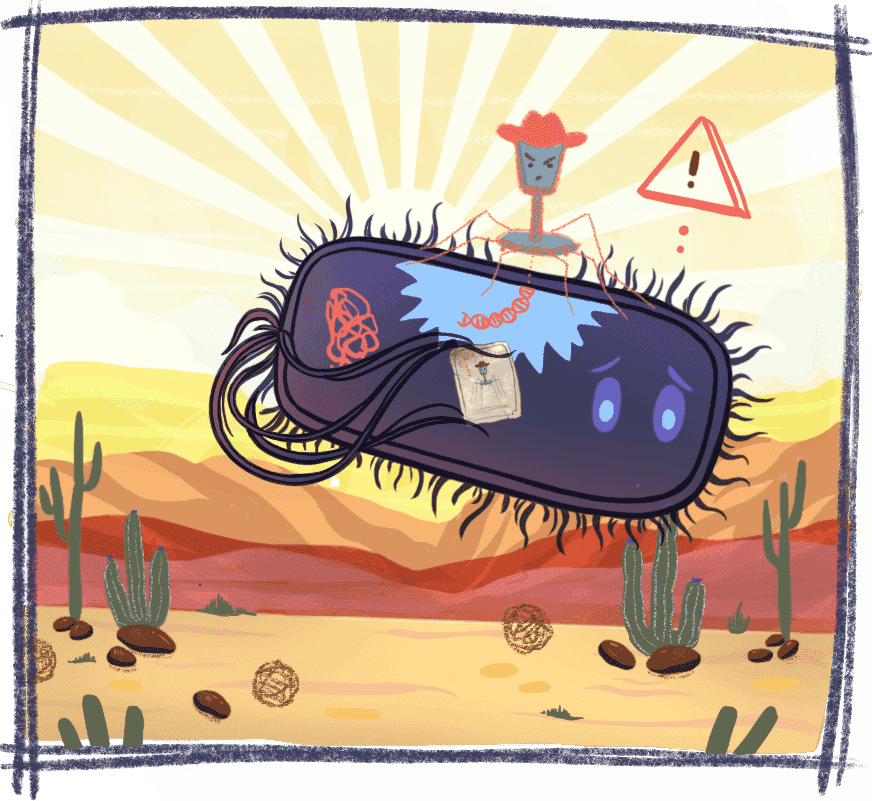

How was CRISPR discovered?
Lots of people contributed to the scientific discovery story of CRISPR! In the late 1980s, scientists noticed that some bacteria have DNA with repeating sequences of letters. These were named “clustered regularly interspaced short palindromic repeats” — what a mouthful! We call them “CRISPR” for short. In the early 2000s, other researchers showed that CRISPR sequences matched DNA from viruses. Fast forward a few more years, and another group of scientists showed that CRISPR sequences are part of an immune system bacteria use to fight viruses. In 2020, Emmanuelle Charpentier and Jennifer Doudna were awarded the Nobel Prize in Chemistry for their work on developing CRISPR into a tool for gene editing.
Scientific discoveries often happen like this: lots of people working across the globe, putting puzzle pieces together over time until the full picture is uncovered. Sometimes we only learn about the one or two people who put in the final puzzle pieces, but there are always many others along the way.
Summary
Germs are very small things like bacteria and viruses. Germs are everywhere. Some are harmless. Some are healthy or helpful. Some can make us sick. Humans and many other organisms have immune systems. The immune system recognizes whether a germ is safe or dangerous, and fights dangerous germs. Sometimes viruses infect bacteria. Many bacteria and archaea have an immune system to fight off these phages. This system is called “CRISPR” for short. CRISPR is a way for bacteria to recognize and destroy phage DNA. Many people contributed to the discovery of CRISPR.
Think about it!
- Can you think of other foods that are delicious because of germs? Hint: think of foods that are “fermented” or “aged.”
- Where ON your body are there germs?
- Where IN your body are there germs?
- What kind of things might your immune system protect you from?
Things to try at home
- Do the Microbe Maker activity
- Make a sourdough starter and bake bread
- Use microbes to make a new biomaterial
- Play Phage Invaders
- Do Not Lick This Book
Illustration use and attribution
The illustrations for CRISPR Made Simple are licensed under a Creative Commons Attribution-NonCommercial-ShareAlike 4.0 International License, and can be used and adapted for non-commercial, educational purposes. ALL modifications and uses must follow the CC BY-NC-SA 4.0 license.
Writing & Creative Direction
Hope Henderson holds a B.A. in Biology from Brown University and a Ph.D. in Molecular & Cell Biology from the University of California, Berkeley. She joined the IGI in 2019 to work in science communication. In addition to serving as IGI’s main writer, she plans content strategy and manages IGI’s social media, illustration, and translation.
Illustrator

Philippa Steinberg
Philippa Steinberg grew up in Hamburg, Germany. She found her passion for drawing in her early teens and began to self-teach, inspired by an online art community. Now she is an undergraduate studying integrative biology at the University of California, Berkeley. Her goal is to make science more accessible through art.
